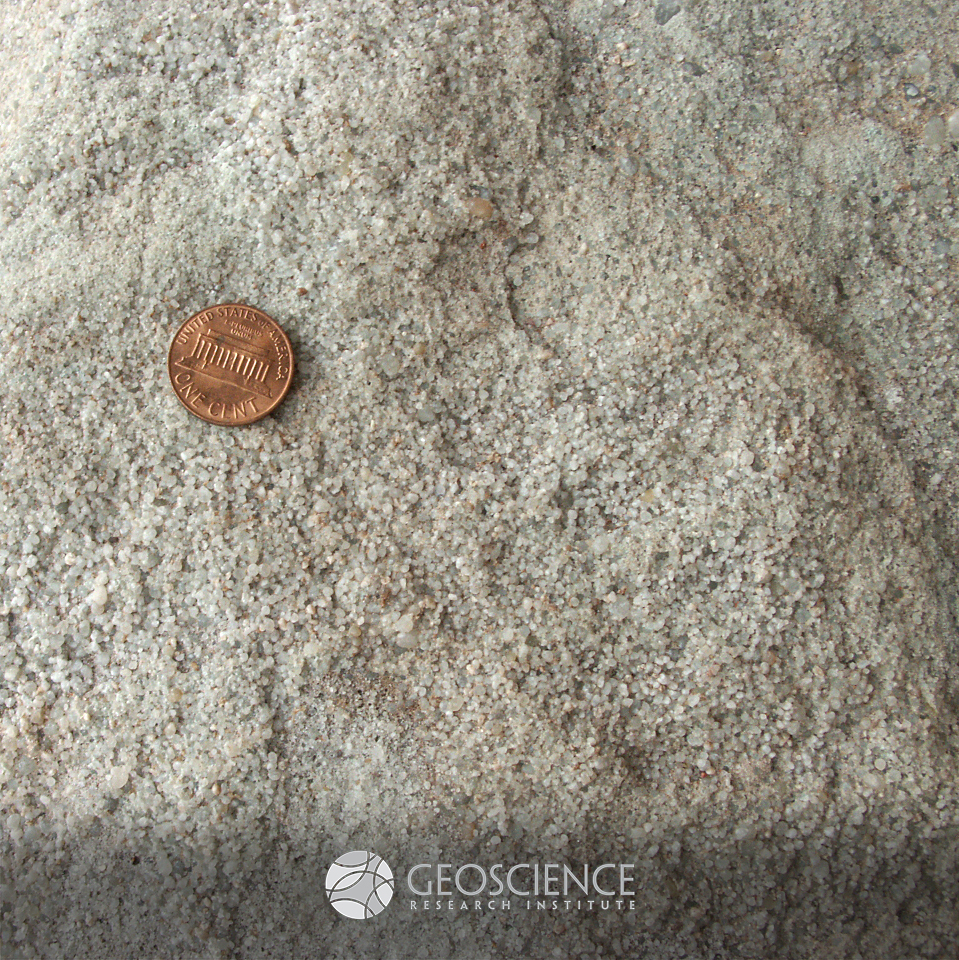©Copyright 2018 GEOSCIENCE RESEARCH INSTITUTE
11060 Campus Street • Loma Linda, California 92350 • 909-558-4548

Flat pebbles
This picture shows three beds containing numerous intraclastic flat pebbles from upper Cambrian strata of the Notch Peak Formation, Utah. We find analogous flat-pebble conglomerates in lower Paleozoic strata from many different regions of the world, including China, North America, Australia, and Korea. In this and other similar cases, Paleozoic rocks record a global signal. Scale in cm.
Great Unconformity
In many places around the world (and through most of the North American continent) Paleozoic rocks have a sharp discontinuity at their base. This widespread erosional surface, called “the Great Unconformity,” often separates layered sedimentary rocks from underlying metamorphic and igneous rocks (the so called “crystalline basement”). In this photo taken near Manitou Springs, CO, USA, the Great Unconformity is marked by the dashed line and overlain by the Cambrian Sawatch Quartzite. Hammer (encircled) for scale.
Moraine Lake
Talus cones, a glacial lake, and Cambrian quartzites: a perfect combo for a gorgeous landscape. Banff National Park, Canada.
Great Unconformity_2
View of the contact between Precambrian basement and the Cambrian Sawatch Quartzite (marked by the tree line, mid-way through the picture), in the vicinity of Glenwood Canyon, CO, US. This important contact, an erosional discontinuity called "the Great Unconformity," is found over large sections of the North American continent.
Cambrian quartzite
This sandstone, made up mostly of quartz grains, is an example of Cambrian quartzite. This type of deposit is very widespread in North America (and in other areas of the world), where it blankets the "Great Unconformity," the erosional surface marking the contact between crystalline basement and overlying sedimentary rocks. Sawatch Formation, vicinity of Colorado Springs, CO, USA




